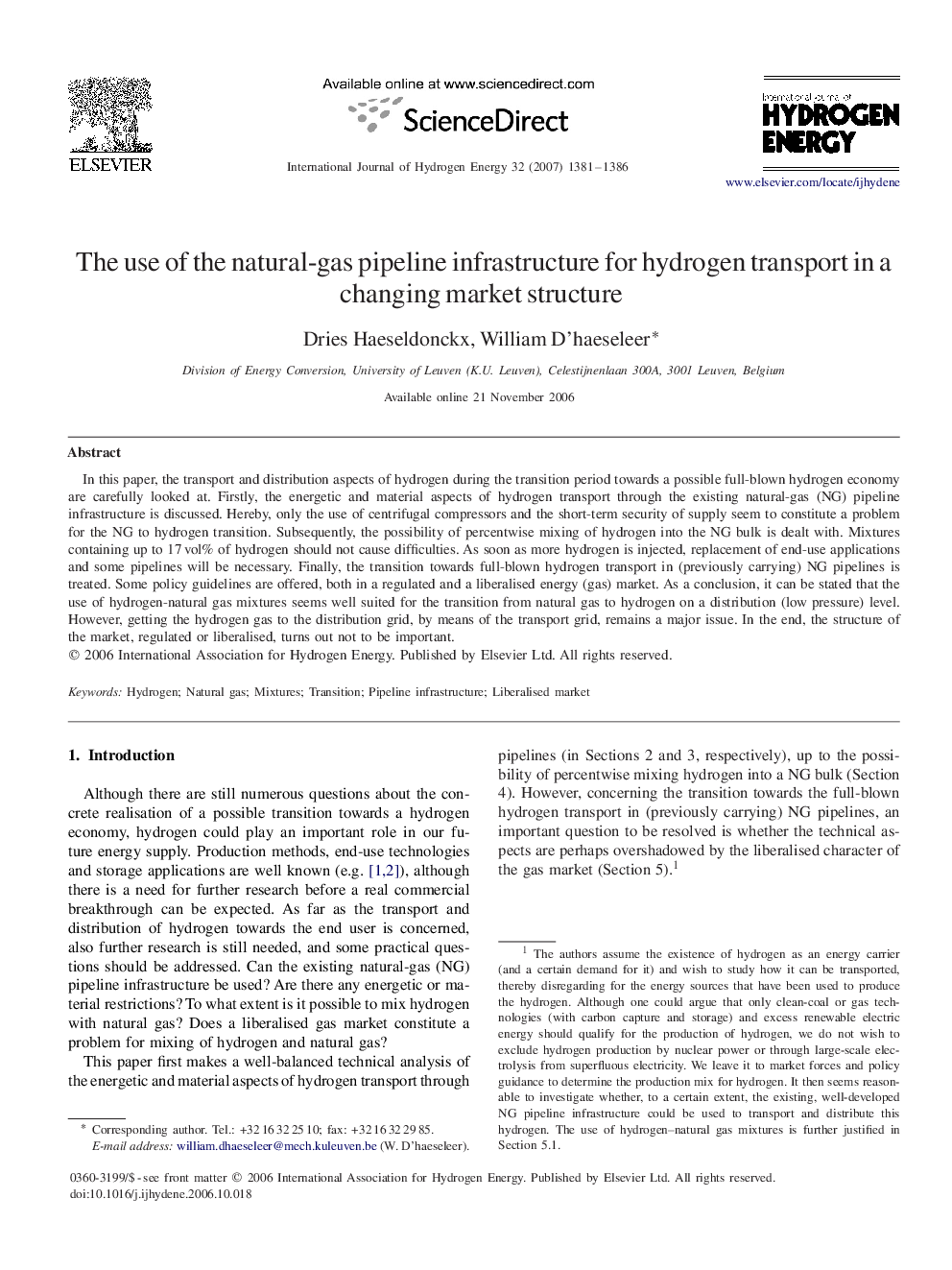| Article ID | Journal | Published Year | Pages | File Type |
|---|---|---|---|---|
| 1280477 | International Journal of Hydrogen Energy | 2007 | 6 Pages |
In this paper, the transport and distribution aspects of hydrogen during the transition period towards a possible full-blown hydrogen economy are carefully looked at. Firstly, the energetic and material aspects of hydrogen transport through the existing natural-gas (NG) pipeline infrastructure is discussed. Hereby, only the use of centrifugal compressors and the short-term security of supply seem to constitute a problem for the NG to hydrogen transition. Subsequently, the possibility of percentwise mixing of hydrogen into the NG bulk is dealt with. Mixtures containing up to 17 vol% of hydrogen should not cause difficulties. As soon as more hydrogen is injected, replacement of end-use applications and some pipelines will be necessary. Finally, the transition towards full-blown hydrogen transport in (previously carrying) NG pipelines is treated. Some policy guidelines are offered, both in a regulated and a liberalised energy (gas) market. As a conclusion, it can be stated that the use of hydrogen-natural gas mixtures seems well suited for the transition from natural gas to hydrogen on a distribution (low pressure) level. However, getting the hydrogen gas to the distribution grid, by means of the transport grid, remains a major issue. In the end, the structure of the market, regulated or liberalised, turns out not to be important.
